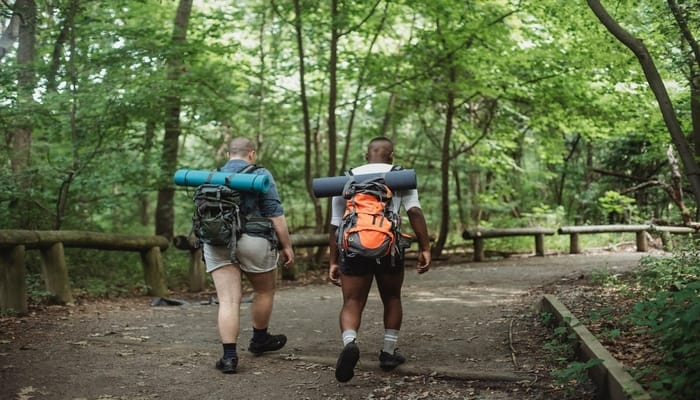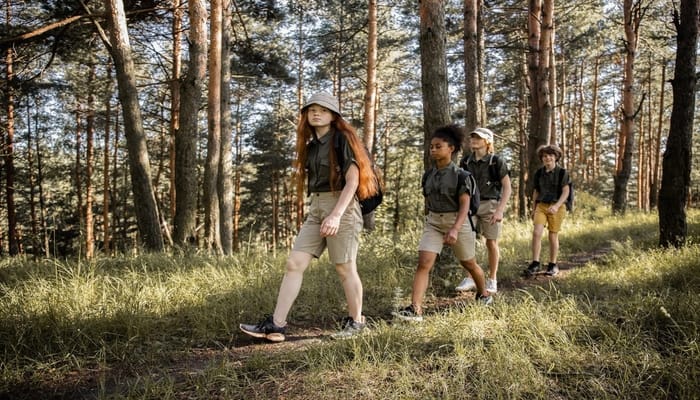Wilderness Therapy For Young Adults: What Is It, Techniques, Benefits & More

An experiential form of therapy where outdoor and nature experiences meet therapy is referred to as wilderness therapy. Wilderness therapy offers an opportunity to young adults to increase self-awareness, improve relationships with others, understand their strengths, and a lot more!
One of the most recommended therapies for teenagers and young adults struggling with mental health disorders and other co-occurring mental health challenges, wilderness therapy can be a bonding experience between teens and their families too.
What Is Wilderness Therapy?

Kurt Hahn, A German educator, founded Outward Bound in the 1960s. Outward Bound became an outdoor education program that facilitated self-awareness and self-development by way of adventure and exploration of the wild.
By the 1970s, the program was offered as an alternative therapy for at-risk teens. Wilderness therapy, also known as outdoor behavioral healthcare, is a therapy model that uses techniques like adventure, expeditions, recreational games, etc to address mental, emotional, and behavioral issues.
While adults can benefit from wilderness therapy, more often than not, this therapy is recommended for at-risk teens and young adults.
There are two different types of outdoor behavioral therapies:
- Wilderness Therapy: Includes outdoor activities focused on perseverance.
- Adventure Therapy: Includes outdoor activities focused on emotional and physical healing.
Wilderness Therapy Techniques Can Be

Techniques of wilderness therapy can include team-building exercises, building survival skills, going on adventures, playing games, etc.
Some techniques can be:
- Expedition: This might include survival skills training and is often done in a group setting. These techniques in wilderness therapy can help encourage teamwork, improve cooperation, build trust, and improve relationships.
- Problem-Solving Games: This might include engaging in games that improve problem-solving skills. These games can help increase self-confidence, leadership skills, and learn how to overcome challenges.
- Adventure: This technique may include going on adventurous activities such as hiking, boating, rock climbing, etc. All these activities aim to help a teen push themselves physically and emotionally.
- Recreational: This technique may include engaging in outdoor activities that help a teen to spend time away from their usual environment and surround themselves with nature.
Along with these techniques, therapy sessions are conducted by mental health professionals. Mostly, the therapy session is done in a group setting but can also be done on a one-on-one basis and in the form of support groups as well.
A therapist here helps the troubled person address and challenge their negative thoughts and behaviors and replace them with positive and healthier thoughts and behaviors.
Some programs may often place a teen with others struggling with similar issues, some may include groups of people at different stages of their recovery and treatment.
Issues Wilderness Therapy Can Help Treat
Wilderness therapy can help treat issues such as:
- Anxiety
- Asperger’s Syndrome
- ADHD
- Depression
- Eating Disorders
- Trauma
- Addiction
- Obsessive-Compulsive Disorder
- Mood Disorders
Among others. For teenagers, wilderness therapy can help them overcome issues such as:
- Low self-esteem
- Avoidance
- Defiance
- Reckless behavior
- Impulsive behavior
- Self-defeating behavior
- Lack of motivation
What Are The Benefits Of Wilderness Therapy?
Nature has always been a healer in more ways than one. Some of the benefits of wilderness therapy can include:
1. Emotional Validation
Participating in adventure-based therapy, you can learn to embrace thoughts and emotions you might not have been aware of previously. Wilderness therapy can help you address your emotions – good and bad – and teach you how to better control them.
2. Better Relationships
Wilderness therapy requires you to participate in group-based activities. Many of such activities require teamwork and being understanding with others. With the help of wilderness therapy, you can learn to better your relationships with your family, friends, and fellow participants as well.
3. Learn Responsibilities
Being immersed in nature, in the wilderness requires you to be responsible not only for yourself but for others too. This therapy model can help a teen learn how to handle responsibilities while building resilience at the same time.
4. Improves Confidence
Wilderness therapy requires you to not only overcome physical obstacles but also fight negative and self-deprecating thoughts and behaviors. With this therapy, you can improve your confidence in yourself and your abilities.
5. Develop Coping Strategies
This therapy model can also be beneficial in helping you develop effective coping strategies that might help you in other areas of your life such as work, school, or home. Wilderness therapy can also help you become self-aware and develop leadership skills that can help build a better you.
6. Improve Overall Wellness & Development
The therapeutic approach to wilderness therapy includes psychological, biological, social, and spiritual therapy. With wilderness therapy, one can learn to become more active, heal amongst nature, and limit the use of their smartphones – which can help improve overall wellness and development.
Are There Any Limitations?
Some psychologists believe that wilderness therapy is not as effective. However, there have been studies where it was recorded that wilderness therapy helped more positive outcomes than other forms of therapy.
Please keep in mind that there are trained and licensed therapists out there who engage in wilderness therapy. Wilderness therapy can be long-term and expensive. Please consult with your insurance agent before moving forward.
There are programs such as the Anasazi Foundation and Second Nature Wilderness Family Therapy that offer wilderness therapy treatment to teens, young adults, and adults.
Online-Therapy
Best at providing Cognitive-behavioral therapy

- Excellent qualified, certified, and trained therapists
- Unlimited communication with the therapist via video, audio, and chat
- Offers a therapy toolbox with access to worksheets, journals, and more
- Affordable weekly subscription plans to pick from
Final Thoughts
Wilderness therapy requires you to let yourself get away from your usual hectic environment and immerse yourself in nature where with the help of a combination of outdoor activities and therapy sessions, you can help re-discover who you are and address any mental health challenges you’re facing.
Please keep in mind that with this experiential form of therapy you seek professional, trained, and licensed therapists and accredited programs only.
I hope this article helped you understand what wilderness therapy is, its techniques, and its benefits. For more, you can write to us at info@calmsage.com or follow us on social media.
Like this article? Let us know your thoughts in the comments below! We’re always happy to hear from you!
Take Care!




















